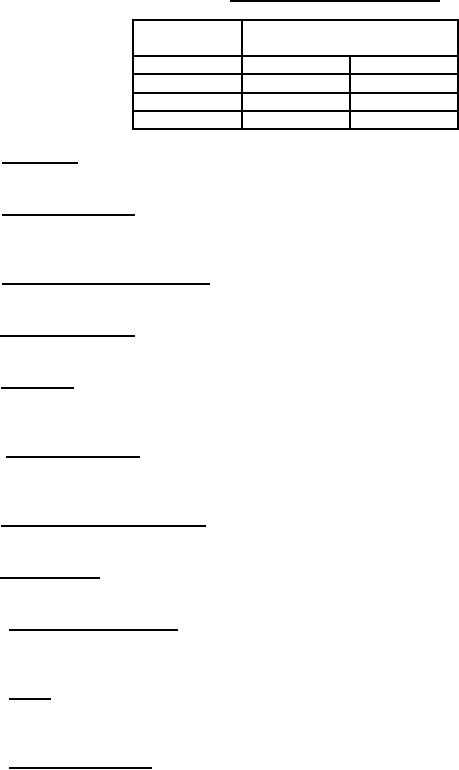
MIL-DTL-5589E
square centimeter with 1 milliwatt root mean square (rms) power. The frequency response shall not
deviate from the 1,000 Hz response by more than the values shown in table I.
TABLE I. Frequency response deviations.
Frequency
(Hz)
Deviations (dB)
Min
Max
100- 2,500
-3
+3
2,501 - 3,000
-3
+5
3,001 - 7,000
-7
+6
3.4.2 Impedance. When measured as specified in 4.6.3, the impedance of the earphone element at
1,000 Hz shall be 300 ohms ±30 ohms.
3.4.3 Harmonic distortion. When measured as specified in 4.6.4, the ring harmonic distortion in the
acoustic output of the earphone shall not exceed 5 percent at 200 Hz and shall not exceed 4 percent at
any fundamental frequency between 400 Hz and 7,000 Hz.
3.4.4 Dielectric withstanding voltage. When tested as specified in 4.6.5, there shall be no arcing or
breakdown of the insulation.
3.4.5 Stray magnetic field. When measured as specified in 4.6.6, the deflection of the magnetic
compass shall not be greater than 7 ½ degrees.
3.4.6 Endurance. When tested as specified in 4.6.7, there shall be no audible rattles or other signs of
failure, and the frequency response shall not vary more than ±3 dB from the initial reading recorded in
3.4.1.
3.4.7 Moisture resistance. When tested as specified in 4.6.8, the frequency response, harmonic
distortion, and dielectric withstanding voltage shall be as specified in 3.4.1, 3.4.3, and 3.4.4 respectively.
There shall be no loosening or deformation of parts or other damage.
3.4.8 Barometric pressure (reduced). When earphones are tested as specified in 4.6.9, the frequency
response shall not vary more than ±3 dB from the initial reading recorded in accordance with 3.4.1.
3.4.9 Thermal shock. When earphones are tested as specified in 4.6.10, the frequency response shall
not vary more than ±3 dB from the initial reading recorded in accordance with 3.4.1.
3.4.10 Vibration, high frequency. When earphones are tested as specified in 4.6.11, there shall be no
structural failure or other defects, and the frequency response shall not vary more than ±3 dB from the
initial reading recorded in accordance with 3.4.1.
3.4.11 Shock. The earphones shall exhibit no damage or failure from breaking, cracks, deformation or
loosening of parts when tested as specified in 4.6.12. The frequency response of the earphone shall not
vary more than ±3 dB from the initial reading recorded in accordance with 3.4.1.
3.4.12 Salt spray (corrosion). After exposure the earphones shall be tested as specified in 4.6.13c.
Within 3 hours after the drying period, the earphones shall be tested as specified in 4.6.13e. There shall
be no evidence of corrosion or pitting which in anyway interferes with electrical or mechanical
performance.
4
For Parts Inquires call Parts Hangar, Inc (727) 493-0744
© Copyright 2015 Integrated Publishing, Inc.
A Service Disabled Veteran Owned Small Business